Qarshi
Qarshi
Qarshi (also a written Karshi) is the administrative capital of the Qashqadaryo Region. It was once a fortress along the Silk Road caravan route running from Samarkand and Bukhara to present-day Afghanistan and India. Qarshi is located 100 km west of Shakhrisabz, 560 km from Tashkent, at the foot of Kungurtau Hill in the Qashkadaryo river basin and has a population of about 200 000. Qarshi was known in the ancient times as Nakhshab and Nasad and the city has fascinated conquerors with its excellent geographical location, fertile land, plentiful pastures and pleasant weather ever since.
Today Qarshi serves as a railway junction, with industries processing agricultural raw materials and producing the most solid pileless carpets in Uzbekistan. Stopping by the city you can check out the busy main bazaar and next to it renovated public square holding a scattering of abandoned medieval buildings. You can also check out the monuments from different historical periods that have been preserved in the city including Odina, a woman’s madrasah, Kok Gumbez, World War II Memorial and a domed structure for storing water and a unique old brick bridge over the Kashkadarya river. More information of highlights of Qarshi is written below. Qarshi area is also a home to several not well documented ancient fortress ruins.
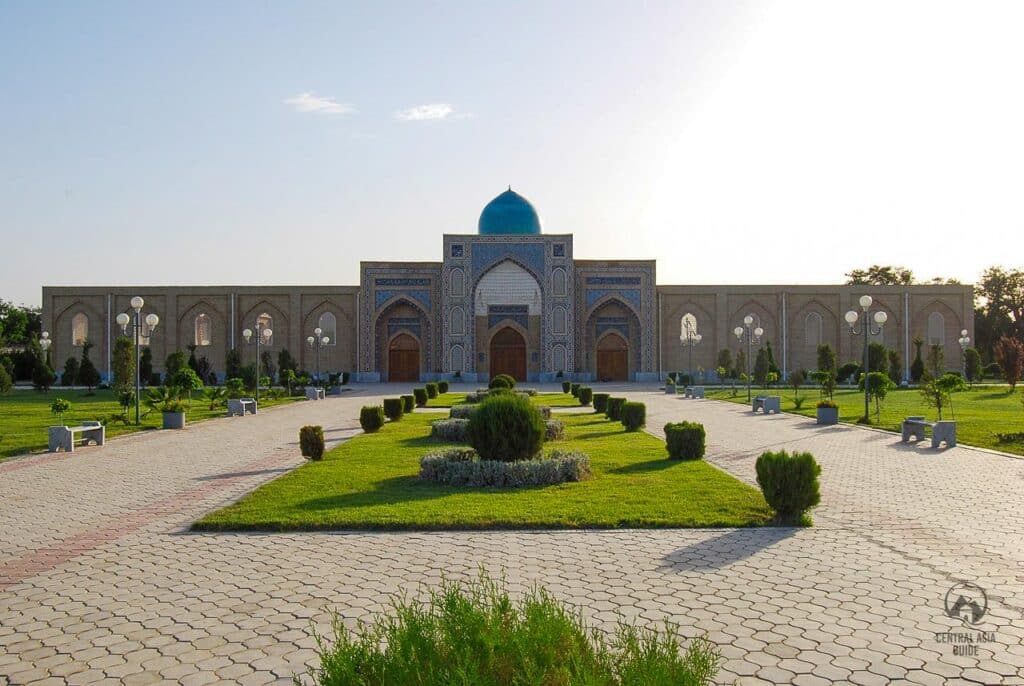
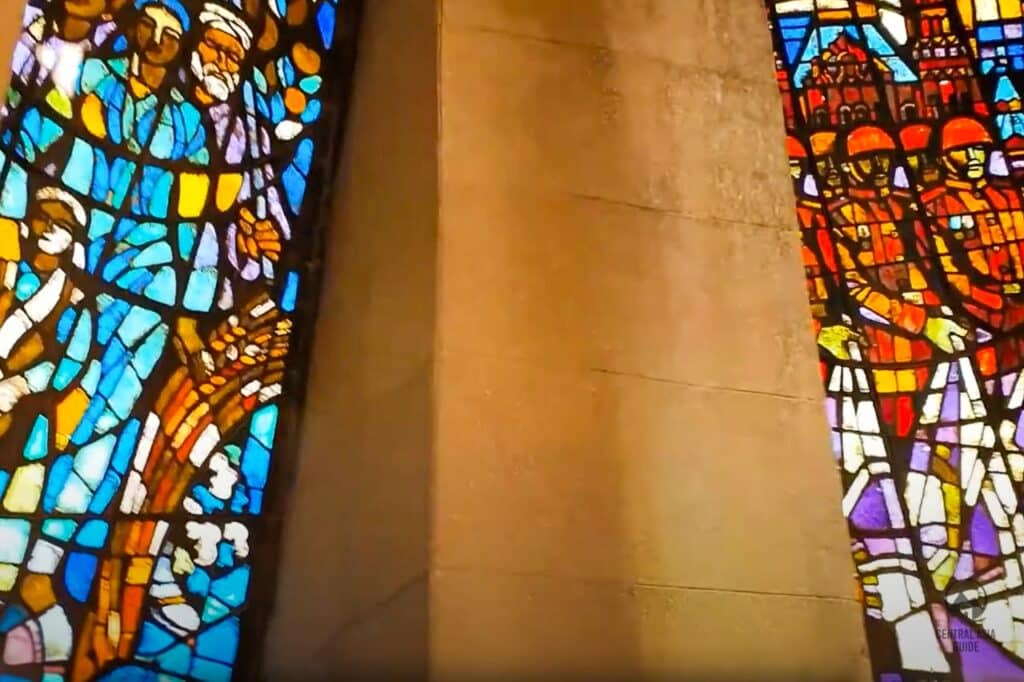
History of Qarshi
Qarshi was conquered by Alexander the Great and later by Arabs and Mongols as most of the region. The name Karshi is obtained from the Turkic word for “fortification” and was likely coined in the 14th century when Amir Timur (Tamerlane) annexed the city to the Timurid Empire and ordered a fortified palace be built in the city.
Qarchi’s development proceeded under the Shaybanid Dynasty well into the 18th century when it served as the second most significant city in the Bukhara Khanate. From 1926 to 1937 the city was called Bekbudi. During the WW2, it was renamed the Qarshi station and only in November 1964 it regained the status of a city.
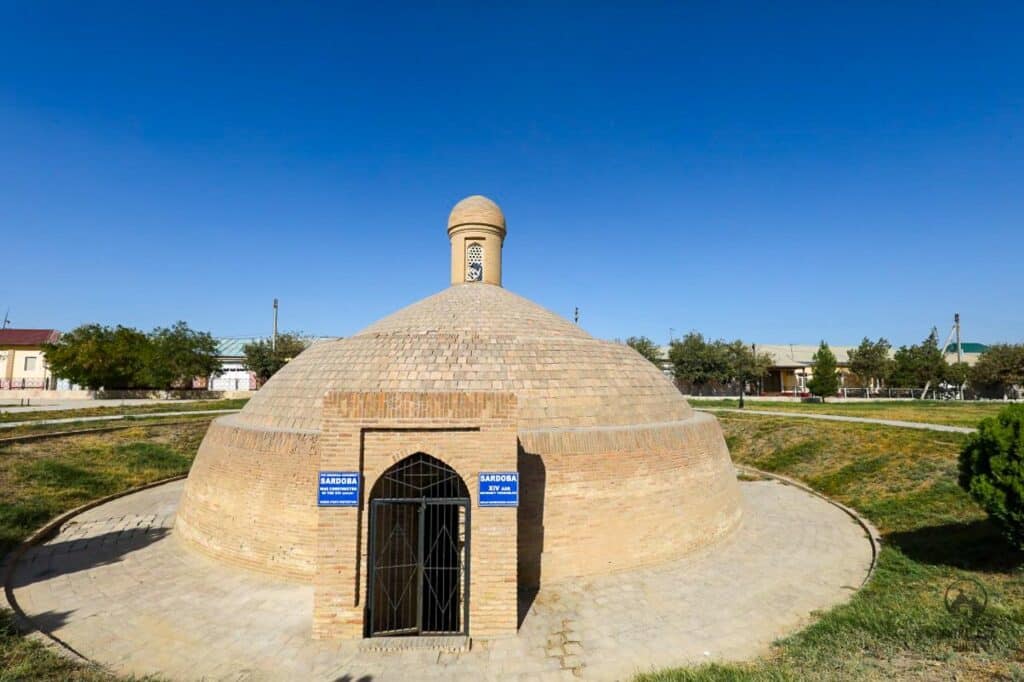
Travel to Qarshi
Qarshi is well connected to the neighboring major cities such as Bukhara, Samarkand, Shahrisabz and Termez by roads and can be well visited when traveling between the more famous nearby destinations. From Shahrisabz you can reach Karshi in just 2 hours, from Bukhara in 3 hours and from Termez in 4 hours by bus, minibus or by a shared taxi.
Qarshi has it own airport located 8 km Southwest of the city center with flight connections mainly to Russian cities including Moscow. There is also another airport (Khanabad airport) east from the city but it is only for military purposes.
Qarshi train station is located next to the airport within about 1 km walking distance at the end of the Uzbekistan street. There are regular trains operating from Tashkent, Samarkand, Bukhara through Navoi and from Termez but in order to go to Termez you need to have a transit visa for Turkmenistan as the railway is partly on the Turkmen side.
Qarshi sights
Qarshi Bridge
Most famous sight of Qarshi is the Qarshi Bridge which is also known as the Amir Temur Bridge and during the era of the Russian Empire and the USSR, the bridge was known as Nikolayev Bridge (Nickolas Bridge) in honor of Nicholas II and sometimes Russian sources still refer to a Nikolayev Bridge. Karshi Historical bridge provides the passage over the widest and deepest part of the Kashkadarya river at the northern part of Qarshi and is 122 meters long, 8.2 meters wide and 5.3 meters high from the bottom of the river to the road surface. 12 large and powerful pillars hold the bridge, connected by wide and low arches. Between the arches, the bridge is supported by powerful cylindrical buttress towers with a diameter of about four meters each. Their lower part is made of stone slabs of regular geometric shape, and the upper part is made of burnt bricks. The bridge was built in a typical Persian style, with elements of Islamic and Central Asian architecture. Qarshi Bridge has similar architecture and view with the famous pol e Khaju bridge over the Zayenderud River in the Iranian city of Isfahan but the Khaju bridge has two floors of arches.
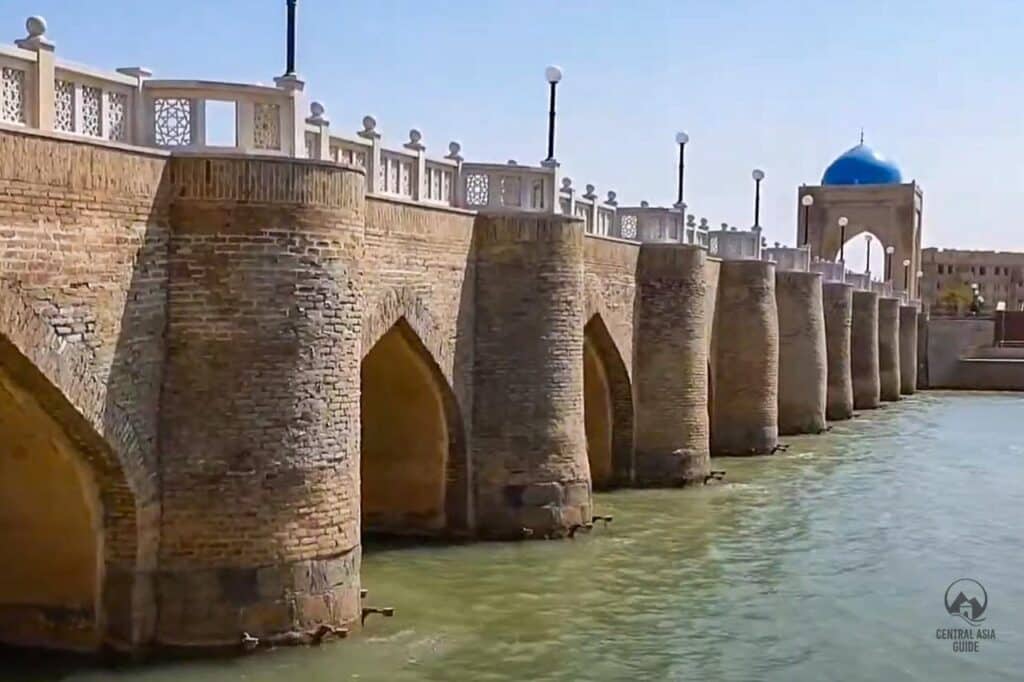
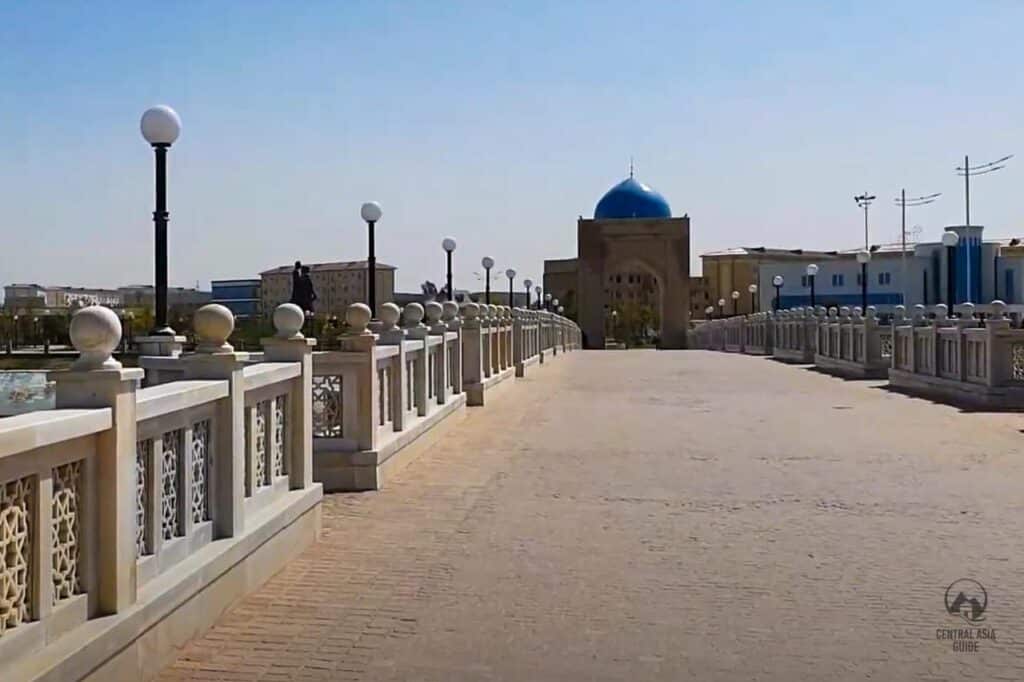
The bridge was built in 1583, at a time when Nasaf (present-day Qarshi) was one of the most important cities of the Sheibanid State. There is a popular misconception among the majority, that the current bridge was built by Amir Temur himself, although he died in 1405.
Some historians believe that, perhaps, on the site of the current bridge, Amir Temur could have actually built a bridge, and the current bridge was rebuilt by the Sheibanids on the site of the bridge of the Timurid period, which was either destroyed as a result of the disaster or destroyed for the reconstruction purpose. In the past numerous caravans crossed the bridge on their way in the Silk Road as Qarshi was a significant stopping point for caravans traveling from Maverannahr to Iran, Arabia, China, India, Europe, Russia and back.
Odina Medrese and Mosque (Qarshi museum)
Odina religious complex consists of a mosque and a madrasa. The complex differs from other structures by their particularly feminine design. It is because the madrasa was an institution to study science and religion only for women. Odina Mosque and madrasa were established on the site of khan’s palace in the 16th century. Today the mosque houses Qarshi’s Regional Museum.
Qarshi World War II Memorial
Qarshi WW2 Memorial dedicated to “the Great Patriotic War” is one of the largest and peculiar ones in Central Asia. It is a diverse mix of plates, walkways, an eternal flame and surrounded by a red star-topped tower with a series of stained-glass windows. A series of plates identify the major Soviet victims of the war and lead up via a 100-meter walkway to an eternal flame, above which stands a 30-meter tower, until recently topped with a huge red star. The higher floors of the memorial are also accessible from time to time by request.
Qarshi Kok Gumbaz Mosque
Kok Gumbaz Mosque is an architectural ancestor of Shahrisabz mosque with the same name. This is a common looking Timurid time mosque, built at the end of the 16th century as part of a series of architectural buildings, among them the still-standing public baths. The mosque still serves for Friday prayers.
Madrasah Khoja Abdulaziz
Madrasah Khoja Abdulaziz is an architectural monument built in 1909, during the reign of the Uzbek ruler Abdulahad Khan (1885-1910). At the beginning of the 20th century, it functioned as a madrasah, where students from different cities of the Bukhara Emirate came to study. From 1975 to 2007, it housed the Kashkadarya Regional Museum of Local Lore.
Yerkurgan Ancient Settlement
Remains of Yerkurgan ancient settlement are situated in Kasan District, 10 km northwest of the modern city of Karshi. Yer Kurgan was founded in the 9th-8th centuries BC and during its history it has been rebuilt and therefore has changed several times. Now only ruins and sandy hillocks survived from once the powerful city. In the 6th century, BC Yerkurgan was conquered by the Turks and destroyed. Now, all the unique finds found in the excavations are presented in the Afrosiab museum in Samarkand. Among them, a diversity of coins and ossuaries, fragments of dishes and household items – all that can tell us at least something about the way of ancient life.
“Yerkurgan” means “earth fortress” because the inner and outer parts of the ancient city were surrounded by the most powerful adobe walls. According to the records, the thickness of some walls reached up to 17 meters. This was done so that the two-wheeled carts could move on top for transportation of grain and water. In the inner part of the citadel life was boiling: artisans made ceramic utensils, shoes and clothes, blacksmiths forged tools but the majority of the population was engaged in farming and cattle breeding. On a high hill, in the heart of Yerkurgan, there was a luxurious palace of a ruler as a symbol of his power and authority. In addition to the palace and the citadel, remains of the city sanctuary, mausoleum and Zoroastrian dahma were found proving the spread of Zoroastrianism on the eastern lands from Khorezm area.
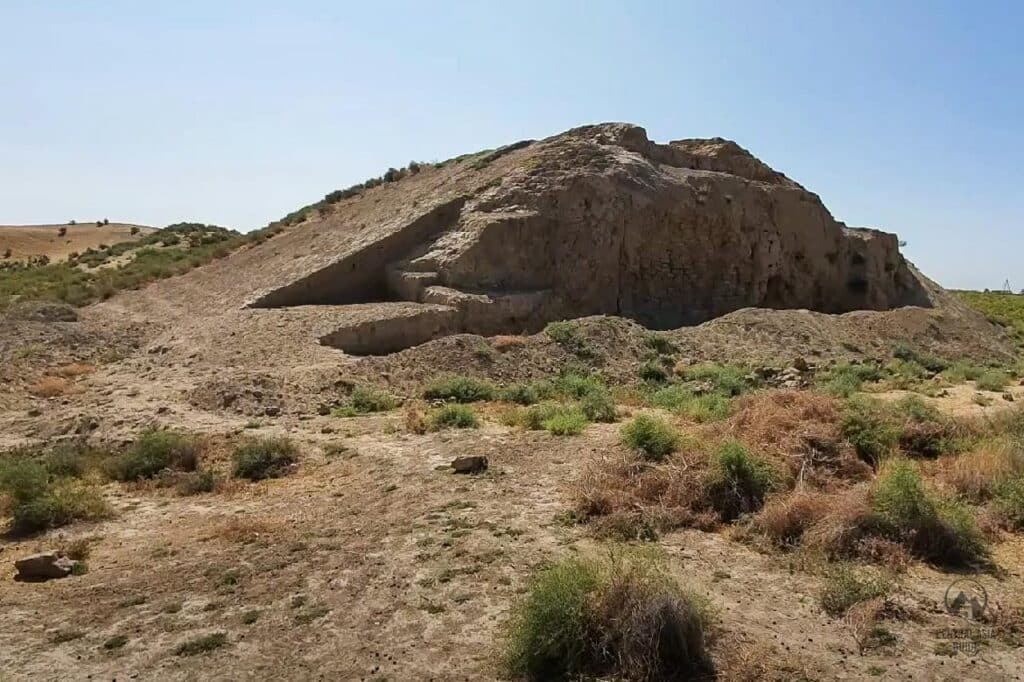
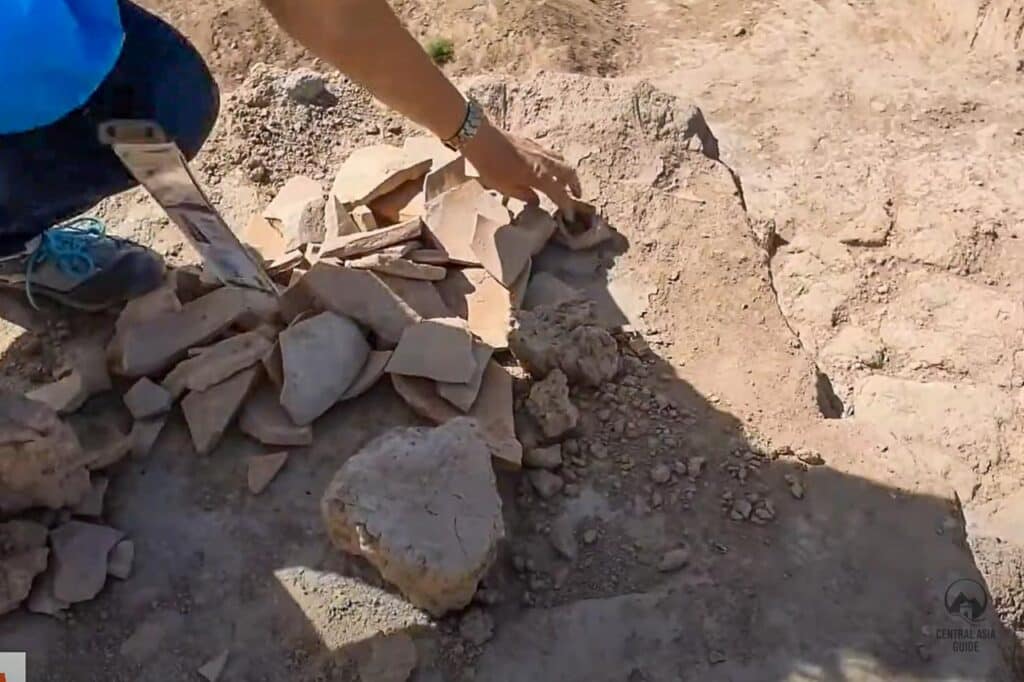
Destinations & sights near Qarshi
Page updated 1.1.2021